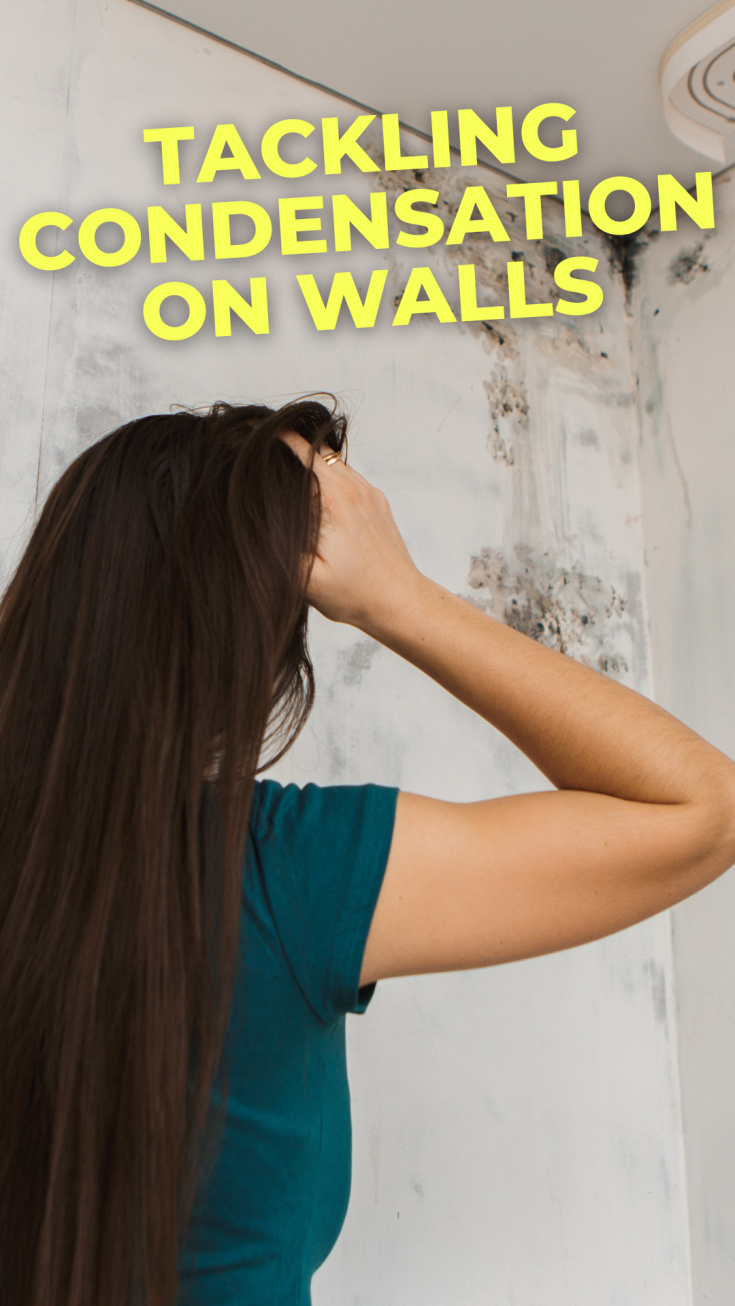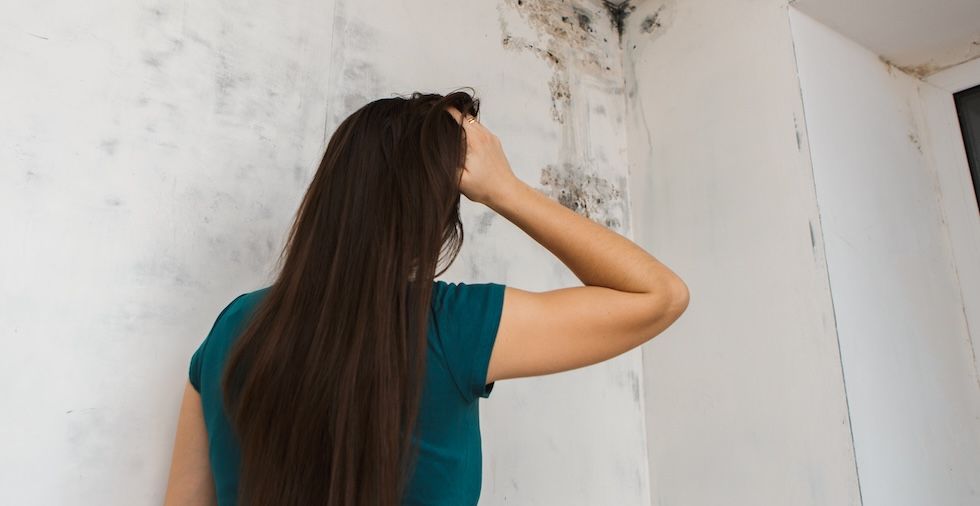- What causes condensation on walls?
- Recognising the telltale signs of wall condensation
- How to deal with different types of condensation
Condensation on walls remains a real issue for homeowners. It's no good burying your head in the sand here. If you don't treat this problem fast, it can lead to dampness, unsightly stains, and potential structural issues. So, what should you do about it?
This comprehensive guide aims to unravel the mysteries behind condensation on walls. We will explore its causes and provide practical solutions to keep your walls dry and your living spaces comfortable. Let's examine why it happens and how you can stop it.
What causes condensation on walls?
Condensation is a natural consequence of warm, moist air encountering cooler surfaces. It results in the formation of water droplets that you may have noticed on the walls of your home. Understanding this process is essential to come up with a viable solution.
So, let's get down to the basics. Excessive moisture within walls, stemming from issues like leaks or elevated humidity levels, creates an ideal breeding ground for condensation.
Therefore, to deal with the condensation on your walls, you must determine where the excess water comes from. Addressing the underlying moisture issues takes precedence when you want to keep your home dry and clean.
Suppose your walls don't have proper insulation, which may mean that warm indoor air and cold surfaces meet, triggering wall condensation. For that reason, insulation is one of the main strategies you may use. Look into your options here. This move will create a barrier against the different temperatures, which could mean less condensation on your walls. It doesn't end there. Insulation minimises condensation and contributes to enhanced energy efficiency within your home.
For more energy saving tips, check out our other article.
Bathrooms, which are, of course, high-moisture zones, frequently deal with condensation issues on walls. You might notice this when you use the bathroom, especially if you have hot showers.
The combination of warmth, moisture, and inadequate ventilation makes the perfect setting for wall condensation. If your bathroom is not well insulated, there's a higher chance of condensation on the walls.
Recognising the telltale signs of wall condensation
So, how do you spot condensation on walls? If you want to prevent extensive damage to your walls and preserve your living spaces, you need some answers. Luckily, we have you covered here. By familiarising yourself with the signs, you can proactively address the issue. It is the first step toward stopping condensation on walls fast.
Water droplets
You might have seen this one already. One of the main signs of wall condensation is the presence of visible water droplets or wet patches on walls, particularly in corners or near windows. Some call this the "walls sweating" because that is exactly how it looks. These conspicuous signs should prompt you to initiate regular inspections, allowing you to spot the onset of condensation issues early on.
Dampness
Does your home look or smell damp? Persistent dampness, a consequence of prolonged condensation, can create stains and discolouration on your walls. These visual cues indicate ongoing condensation problems, signalling the urgent need for intervention. Of course, you might also notice a musky smell that starts to happen when it is damp.
If you need it, take a look at our guide on how to get rid of mould next. We've also got a detailed article on removing black mould.
Frost on your walls
In colder climates, where the risk of condensation is heightened, frost on walls is an immediate sign of the issue. Put simply, this means that the moisture in walls freezes. As temperatures drop across the country, do you notice frost on your walls? If so, you need to take action fast. Insulating affected areas and regulating the average temperature may be the best way to combat condensation in colder climates.
5 effective strategies to stop wall condensation
You want to keep your home safe and free from any structural damage. That is a given. So, identifying and addressing condensation on walls is the answer. By adopting proactive strategies, you can create an environment that safeguards your walls from the detrimental effects of condensation. It may be easier than you think to protect your home. Let's explore effective strategies to maintain a healthy and moisture-free home.
1. Manage the ventilation
Ensure good airflow by using exhaust fans, opening windows, and installing ventilation systems in moisture-prone areas like bathrooms and kitchens. Adequate ventilation is crucial in preventing moisture buildup.
To keep your fan running, we've got tips for cleaning cooker hood filters, too.
2. Insulate your walls
As we have covered, insulation can make a world of difference here. Apply insulation to the inner surfaces of external walls to create a barrier against temperature differentials, reducing the likelihood of condensation. Proper insulation serves as a proactive measure against condensation issues.
3. Deal with leaks
Are you ignoring a leak in your home? Address any water leaks promptly, as accumulated moisture within walls is a prime contributor to condensation issues. You may find that a leak leads to condensation on walls or even condensation on ceilings. Don't stand for it. Regular inspections and timely repairs are essential in maintaining a moisture-free environment.
4. Use a dehumidifier
Using one of the best dehumidifiers in areas with high humidity levels helps extract excess moisture from the air, preventing condensation. Regular maintenance of dehumidifiers ensures their optimal performance.
Did you know you can use a dehumidifier to dry clothes? We've got a full guide.
5. Keep the place clean
Regularly clean gutters, downspouts, and roof valleys to prevent water accumulation, which significantly contributes to wall moisture. Ensure that the exterior of your home is well-maintained to avoid water penetration.
How to deal with different types of condensation
Are you looking for some more solutions? We have the answers you need. The impact of condensation varies across different areas within your home, necessitating tailored solutions to address the specific challenges posed in each space. Let's delve into comprehensive strategies for common areas. Here are some innovative options to explore.
1. Use an extractor fan in the bathroom
Installing and utilising extractor fans in bathrooms is a proactive measure to enhance ventilation and expel humid air.
After indulging in a hot shower, wiping down surfaces such as walls and mirrors can remove excess moisture, minimising the likelihood of condensation.
Consider upgrading your bathroom's ventilation system to ensure optimal performance. Incorporating moisture-resistant materials in the construction of your bathroom can contribute to long-term prevention.
2. Open bathroom doors
Keep bedroom doors open to facilitate proper air circulation. Allowing warm air to flow freely helps reduce the likelihood of condensation by preventing stagnant, humid air pockets.
Implementing effective heating solutions in bedrooms contributes to temperature regulation. Installing humidity control devices in bedrooms provides an additional defence against condensation.
3. Insulate your loft
Insulating your loft is fundamental in regulating temperature and preventing condensation buildup.
Ensuring adequate ventilation in lofts is essential for moisture control. Well-designed ventilation systems facilitate the exchange of air, preventing the buildup of stagnant, humid conditions conducive to condensation.
4. Get an exhaust fan in the kitchen
Use exhaust fans while cooking to expel moisture-laden air. Cover pots when boiling to minimise the release of steam into the air.
Ensure proper ventilation in kitchens to promote air circulation and mitigate the potential for condensation. Well-ventilated spaces are less prone to moisture-related issues.
Understanding the causes of condensation on walls and implementing targeted strategies can transform your living spaces. Don't let condensation dampen your home—take charge, insulate, ventilate, and enjoy a cosy, moisture-free environment. With these practical solutions, you can conquer condensation and dry your living space.
Q&A
Do you want more answers about condensation on walls? You've come to the right place. Here are some frequently asked questions.
Should you wipe condensation off walls?
You can wipe condensation off your walls using a clean microfibre cloth. However, keep in mind that this move does not solve the problem. To eliminate the condensation, you must look into other strategies. This guide covers some of the top solutions you can use when the walls are sweating.
Do cold walls cause condensation?
Cold walls and a lack of proper insulation may be one cause of condensation. When you notice condensation on your walls, look into the various ways that you can deal with it. You may find that having your home insulated is one answer. You could also look at ways to heat your home to get rid of the problem.
Does a warm house stop condensation?
Warming your home is one way to tackle condensation on walls. If you want to combat this issue, you can try maintaining a stable temperature in your home. However, as we have covered here, there are other ways to get rid of condensation at home. Consider what may be causing the problem and then use one of the strategies above.
Which tip did you find most effective? Leave a comment below!


Leave a Reply